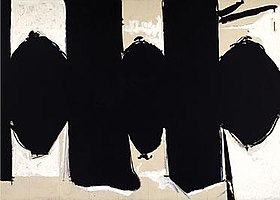
In case you haven’t seen it yet, 60 minutes examined the rapid fall of the Knoedler Art Gallery in 2011. The piece does a thorough job of giving background on the Knoedler Gallery, the role of the Cataloge Raisonne, and scientific testing.
I found particularly interesting this exchange between Anderson Cooper, and Domenico de Sole, one of the collectors, and the chairman of Sotheby’s which underscores the role of reputation and trust in the art market:
Anderson Cooper: Do you feel you did enough due diligence as a buyer?
Domenico de Sole: My due diligence was to go to the best, most prominent gallery in the United States dealing with a person with a stellar reputation, and pay a price that was reasonable, it was fair.
Domenico de Sole was the person who bought that $8 million fake Mark Rothko and told us he believes Knoedler Gallery and its President Ann Freedman either knew or should have known that this lucrative collection could not possibly be genuine. Greg Clarick is his attorney.
Greg Clarick: The red flags began with the notion that Glafira Rosales, who was an unknown person to Knoedler, who Knoedler never investigated, came in and she started delivering what turned out to be an endless stream of never-before-seen paintings was enough to raise a huge red flag.
Anderson Cooper: Strangers don’t walk off the street into a gallery saying that they have access to a never-before-seen collection of some of the greatest masterpieces
Greg Clarick: That’s right. Second, the works had no provenance.
Anderson Cooper: No chain, no history?
Greg Clarick: They had no history. They had no documents.
Anderson Cooper: So there was no evidence these paintings had ever been painted by the artists?
Greg Clarick: That’s correct.
Not only that, there were no bills of sale, no insurance records, no shipping documents, and no museum exhibitions for any of the paintings. Greg Clarick told us the gallery had motivation to overlook the paintings’ shortcomings.
Greg Clarick: Over the period of this fraud, Knoedler sold these paintings for about $67 million. Knoedler made over $40 million in profit from selling these paintings. And at the same time, Knoedler made essentially no money at all from selling other paintings.
